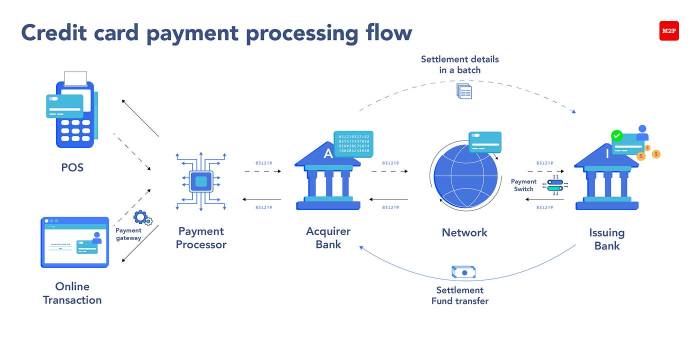How to Invest Money Wisely with Low Risk for Beginners
How to invest money wisely with low risk for beginners is a crucial question for anyone starting their financial journey. This guide provides a clear and accessible path to building a secure financial future, even with limited experience. We’ll explore various low-risk investment options, emphasizing the importance of understanding your risk tolerance and setting realistic goals. Learn how to diversify your portfolio, minimize fees, and monitor your progress to achieve long-term financial success.
From understanding your personal financial situation and risk tolerance to exploring low-risk investment vehicles like high-yield savings accounts and government bonds, we’ll break down the essentials. We’ll also cover the benefits of diversification, the importance of emergency funds, and when seeking professional financial advice might be beneficial. This comprehensive approach ensures you’re well-equipped to make informed decisions about your money.
Understanding Risk Tolerance and Financial Goals
Beginning your investment journey requires understanding your comfort level with risk and defining your financial aspirations. Successfully navigating the world of investing hinges on aligning your investment strategy with both your risk tolerance and your long-term goals. Ignoring either aspect can lead to poor investment decisions and ultimately, financial dissatisfaction.
Risk Tolerance Assessment
Risk tolerance refers to your ability and willingness to accept the possibility of losing money in pursuit of higher returns. A higher risk tolerance means you’re comfortable with potentially larger fluctuations in your investment value, while a lower risk tolerance indicates a preference for stability and preservation of capital. Understanding your risk tolerance is crucial in selecting appropriate investments.
For example, someone with a high risk tolerance might invest heavily in stocks, while someone with low risk tolerance might prefer bonds or savings accounts.
Risk Tolerance Questionnaire
This questionnaire will help you assess your risk tolerance. Answer honestly to gain a clearer understanding of your investment comfort zone.
| Question | Answer Options |
|---|---|
| How comfortable are you with the possibility of losing some or all of your investment? | Very Uncomfortable, Somewhat Uncomfortable, Neutral, Somewhat Comfortable, Very Comfortable |
| What is your investment time horizon? (How long do you plan to invest your money?) | Less than 1 year, 1-3 years, 3-5 years, 5-10 years, More than 10 years |
| How would you describe your overall financial situation? | Very Secure, Secure, Neutral, Somewhat Insecure, Very Insecure |
| How much fluctuation in your investment value would you be able to tolerate without panic selling? | Less than 5%, 5-10%, 10-20%, 20-30%, More than 30% |
| Are you primarily focused on capital preservation or growth? | Capital Preservation, Balanced, Growth |
By analyzing your answers, you can gain a better understanding of your risk profile. For instance, consistently selecting “Very Uncomfortable” and “Less than 1 year” suggests a very low-risk tolerance.
Financial Goal Setting
Defining clear, realistic, and measurable financial goals is paramount to successful investing. Without specific objectives, it’s difficult to track progress, make informed decisions, and stay motivated. Goals should be SMART: Specific, Measurable, Achievable, Relevant, and Time-bound. For example, instead of vaguely aiming to “save more money,” a SMART goal would be “Save $10,000 for a down payment on a house within three years.”
Financial Goal Setting Worksheet
This worksheet helps you structure your financial goals.
| Goal | Amount Needed | Timeline | Current Savings | Investment Strategy |
|---|---|---|---|---|
| Down Payment on a House | $50,000 | 5 years | $5,000 | Index Funds, High-Yield Savings Account |
| Retirement Savings | $1,000,000 | 30 years | $0 | Diversified Portfolio (Stocks, Bonds, Real Estate) |
| Child’s College Fund | $100,000 | 18 years | $10,000 | 529 Plan, Education Savings Bonds |
This worksheet provides a framework. You should adapt it to reflect your personal circumstances and ambitions. Remember, your goals should be challenging yet attainable. Regularly reviewing and adjusting your goals as your circumstances change is crucial for long-term success.
Diversification and Portfolio Building
Diversification is a cornerstone of any sound investment strategy, especially for beginners aiming for low-risk growth. It involves spreading your investments across different asset classes to reduce the impact of poor performance in any single area. By diversifying, you’re essentially hedging your bets, lessening the overall volatility of your portfolio and protecting your capital.Diversification doesn’t eliminate risk entirely—no investment is entirely risk-free—but it significantly mitigates it.
A diversified portfolio is better positioned to weather market fluctuations and achieve long-term growth.
Building a Diversified Portfolio: A Step-by-Step Guide
Building a diversified portfolio requires a systematic approach. Begin by assessing your risk tolerance and financial goals (as previously discussed), then follow these steps:
- Choose your asset classes: Common asset classes include stocks (equities), bonds, real estate, and cash equivalents (like savings accounts or money market funds). Consider including a mix of domestic and international investments for broader diversification.
- Allocate your assets: Determine the percentage of your portfolio you’ll allocate to each asset class. This allocation will depend on your risk tolerance and time horizon. A lower-risk portfolio might allocate a larger percentage to bonds and cash, while a higher-risk portfolio might favor stocks.
- Select specific investments within each asset class: Instead of investing in a single stock, consider index funds or exchange-traded funds (ETFs) which provide instant diversification within a specific asset class (e.g., an S&P 500 index fund diversifies across many large US companies). For bonds, you can invest in bond funds or individual bonds with varying maturities.
- Regularly rebalance your portfolio: Over time, the allocation of your portfolio might drift from your initial plan due to market fluctuations. Regular rebalancing (e.g., annually or semi-annually) helps restore your desired asset allocation and maintain your risk level.
- Monitor and adjust: Keep track of your portfolio’s performance and make adjustments as needed, based on changes in your risk tolerance, financial goals, or market conditions.
Sample Diversified Portfolio
This example represents a hypothetical low-risk portfolio suitable for a beginner with a long-term investment horizon. Remember, this is just a sample, and your specific allocation should be tailored to your individual circumstances. It’s crucial to consult a financial advisor for personalized guidance.
- High-Yield Savings Account/Money Market Account: 10%
-Provides liquidity and a safe place for emergency funds. - Government Bonds: 30%
-Offer relatively low risk and stable returns. - Corporate Bonds: 15%
-Slightly higher risk than government bonds, but potentially higher returns. - Large-Cap Stock Index Fund (e.g., S&P 500 ETF): 30%
-Diversifies across large, established companies, offering moderate growth potential. - Real Estate Investment Trust (REIT) ETF: 15%
-Provides exposure to the real estate market without directly owning property.
Adjusting Your Portfolio, How to invest money wisely with low risk for beginners
Your risk tolerance and financial goals may change over time. For instance, as you get closer to retirement, you might shift your portfolio toward lower-risk investments like bonds and cash to preserve capital. Conversely, if your risk tolerance increases, you might allocate a larger portion to stocks. Similarly, if your financial goals change (e.g., you need more funds for a down payment on a house), you might need to adjust your portfolio accordingly.
Regular review and adjustment are key to maintaining a portfolio aligned with your evolving needs. For example, someone nearing retirement might reduce their stock allocation to 10% and increase their bond allocation to 50% to prioritize capital preservation over growth. Conversely, a younger investor with a longer time horizon might increase their stock allocation to 60% to take advantage of higher growth potential.
Successfully navigating the world of investing, especially as a beginner, requires careful planning and a well-defined strategy. By understanding your risk tolerance, setting realistic financial goals, and diversifying your investments across low-risk options, you can build a strong foundation for long-term financial security. Remember to regularly monitor your portfolio, rebalance as needed, and consider seeking professional advice when necessary. Taking these steps empowers you to confidently manage your finances and achieve your financial aspirations.
FAQ Overview: How To Invest Money Wisely With Low Risk For Beginners
What is a good starting amount to begin investing?
There’s no magic number. Start with whatever amount you’re comfortable investing without jeopardizing your essential expenses. Even small, consistent contributions can grow significantly over time.
How often should I rebalance my portfolio?
A common approach is to rebalance annually or semi-annually, but the frequency depends on your investment strategy and risk tolerance. Significant market fluctuations might necessitate more frequent adjustments.
Are there any tax implications for investing?
Yes, investment income is often subject to taxes. The specific tax implications vary depending on your investment type, location, and overall financial situation. Consult a tax professional for personalized guidance.
What if I lose money on my investments?
Losses are a possibility with any investment. A well-diversified low-risk portfolio can help mitigate losses, but some level of risk is inherent. It’s crucial to invest only what you can afford to lose.


